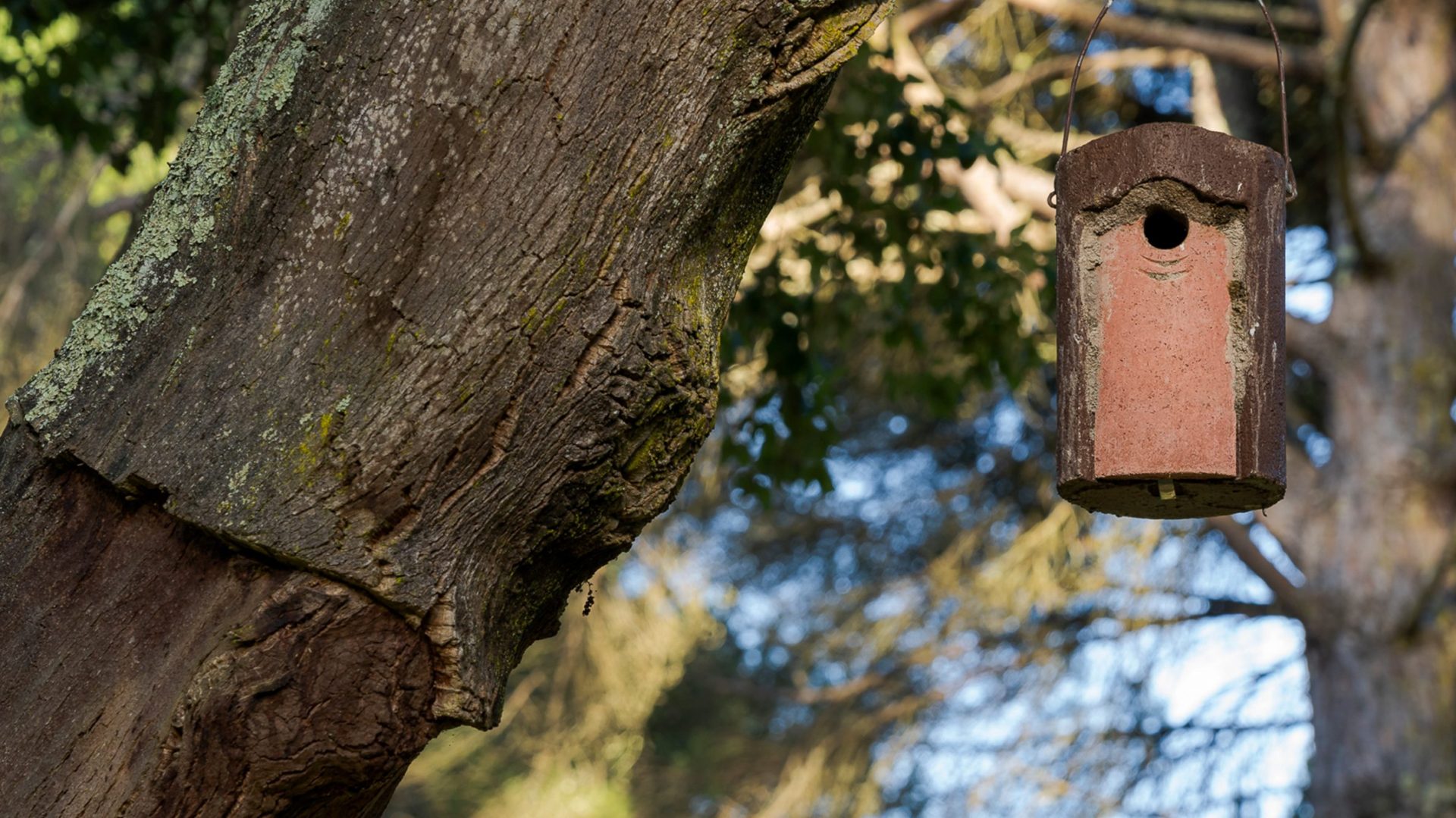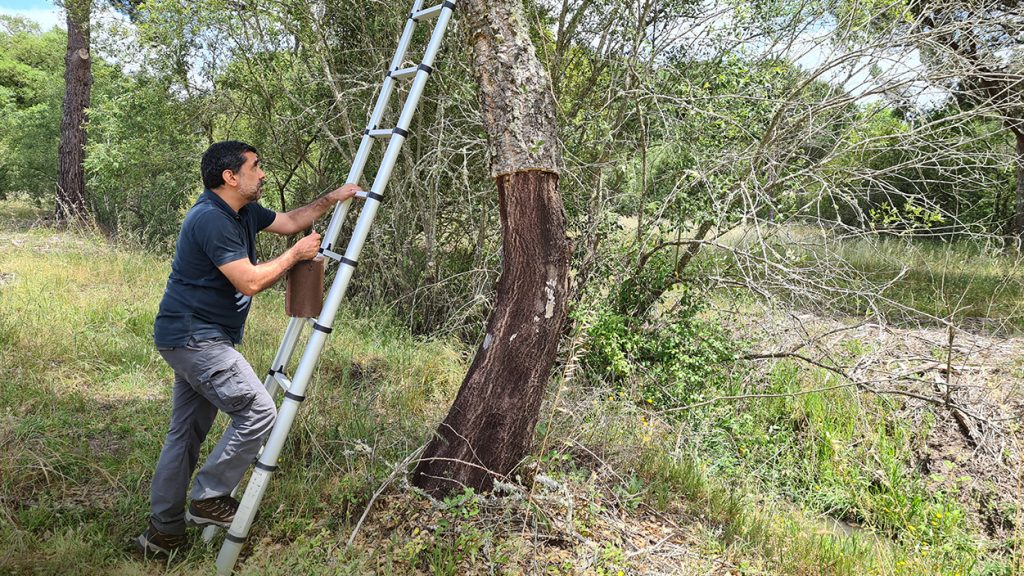Inside the nest boxes installed at Herdade de Espirra, several species of birds nest and contribute to a true “3-in-1”: more biodiversity, greater natural pest control, and greater environmental awareness.
Here and there, hanging from cork oaks (Quercus suber), stone pines (Pinus pinea) and eucalyptus trees (Eucalyptus globulus), small odd-looking structures go almost unnoticed in the landscape of Herdade de Espirra, in the heart of the Setúbal Peninsula. They can be found by more attentive human visitors roaming the 1700 hectares of this property, where pine nuts, wood, cork, and wines are produced, but there are other more important types of visitors and inhabitants: small birds, for which these nest boxes provide a great place for breeding.
Due to their characteristics (the size of the entrance, for example) and the carefully chosen locations where they are installed on the property, these nest boxes seek to attract insectivorous cavity-nesting birds, that is, specific species of birds that feed on insects and usually make their nests in the small cavities of older trees. In this way, the installation of these nest boxes ends up rebalancing the ecosystem in areas of less mature forest, making artificial cavities available to these species.
The first 30 nest boxes were installed in the winter of 2019. A year later, a new batch made it possible to increase the number of boxes available for the small birds. Today, the focus of The Navigator Company, owner of Herdade de Espirra, has shifted from installation to maintenance. The priority now is to ensure that the nest boxes are in good condition, through regular cleaning (eliminating parasites, for example), and to monitor occupation.
What has been observed is encouraging: “certainly 90% of the nest boxes are occupied”, stresses Rogério Cangarato, an ornithologist involved in this initiative at Herdade de Espirra. The specialist adds that “occupation and reproduction have both been very successful, which has led to an increase in these species on the property and at the local level”.





